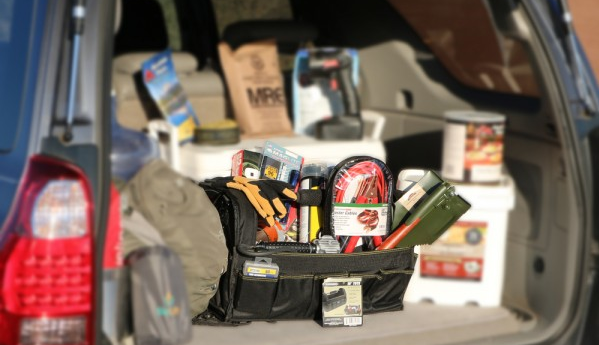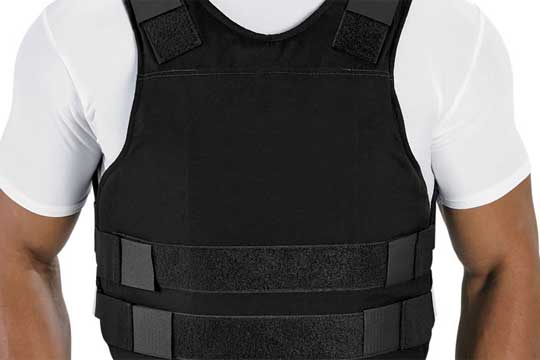How to protect your homestead when these natural disasters hit
07/28/2021 / By Ramon Tomey

Letting go of the conveniences of city living opens homesteaders to new sets of risks. However, homesteaders have an advantage over city dwellers due to their self-sufficiency. Regardless, people who live in the city or on their own homestead are not immune to natural disasters that can strike at any time. To help you be one step ahead, here are some ways to address natural disasters that may befall homesteads.
Floods
Floods are one of the most common yet destructive disasters that can hit a homestead. Homesteads near rivers or low-lying areas have a greater risk of suffering from these floods. Location thus plays an important role in establishing a homestead – with areas not prone to flooding being the best options. Once the homestead is established, the next step is protecting it from a deluge.
Ensuring excellent drainage is the first and most basic method to prevent flood damage, but it can only deal with a minimal amount of water. Dikes and berms are other alternatives that can be constructed in anticipation of larger flood waters. Sandbags can also be used, but they require extreme effort. Hydro-dams are also becoming a viable option. These huge, cylindrical rubber containers stand several feet tall when filled with water and can resist the force of floods.
The game changes when flood waters make it past these barriers, with items and animals to save or sacrifice being the immediate concern. Any essential items for continued survival can be moved to higher ground or storage to avoid flood waters. Animals can be rounded up and brought to higher ground or taken to a sympathetic neighbor whose property is safe from flooding.
Tornadoes and hurricanes
Destructively powerful winds accompany tornadoes and hurricanes, which threaten houses and other structures on homesteads. Taking shelter, preferably underground, is a suitable option to avoid the strong winds. Animals should not be forgotten likewise and should be sheltered in a safe location.
Indoor and outdoor storm shelters are good investments for potential storms. According to an article by Oak Hill Homestead, many residents in Oklahoma and other states in the so-called “tornado belt” have these storm shelters installed in their homes. These shelters can be made of concrete or metal, and either buried outside or placed inside the house.
Other preparations can be done even before tornadoes and hurricanes strike the homestead. Using high-grade fasteners that will better resist the stress of powerful winds when constructing houses and other structures is very much advisable. Heavy-duty storm shutters are also advisable investments for storm protection as they safeguard home interiors from glass and flying debris.
Blizzards
Blizzards may or may not have accompanying high winds, but they are always guaranteed to bring snow and freezing cold temperatures. The effects of the winter storm that hit Texas in early 2021 is an example of the effects of blizzards on cities. However, homesteaders may face different risks such as destroyed crops or animals dying from the cold.
It is best to stockpile food, ample amounts of water, heating fuel and medicines for both humans and animals before the blizzard strikes. Animals should also be provided with shelter to protect them from the intense cold. On the other hand, extra effort is needed to take care of animals as they will be dealing with freezing water and lack of access to their food.
Snow accompanying blizzards often makes traveling outside difficult and dangerous. Snowmobiles, snow cats or specially equipped automobiles can safely navigate blizzard conditions. Homesteaders should consider investing in these specialized vehicles for such situations.
Fires
Homesteaders fear fires as they can consume everything and leave nothing. Fighting fires is also a challenge, as homesteaders are far away from fire departments – if they are existent in some places. Fortunately, addressing fires as soon as they start can go a long way in preventing major conflagrations.
Fire extinguishers are the first line of defense against small blazes – with large, properly rated and high-capacity variants advisable. Family members should know where these fire extinguishers are located and how to operate them. Aside from this, a response plan for various fire scenarios should be rehearsed depending on where they start in the homestead.
Fire-breaker barriers help curb the spread of fire as they are devoid of fuel for it. Some states require 30- to 100-foot fire breaks around structures – but the larger the radius, the better. Survivopedia also mentions the role of plants in preventing the spread of fire. Pruning trees around homestead structures also deprive fires of possible fuel they can consume while spreading. Lastly, fire-proof trees that shed fewer leaves and contain more moisture also play a role in preventing homestead fires.
Homesteading.news has more articles on preparing for disasters that may befall homesteads.
Sources include:
Tagged Under: blizzards, disaster preparedness, fires, floods, homesteading, how-to, Hurricanes, natural disasters, preparedness, prepper, prepping, survival, survivalist, tornadoes
RECENT NEWS & ARTICLES
COPYRIGHT © 2017 OFFGRID NEWS




















